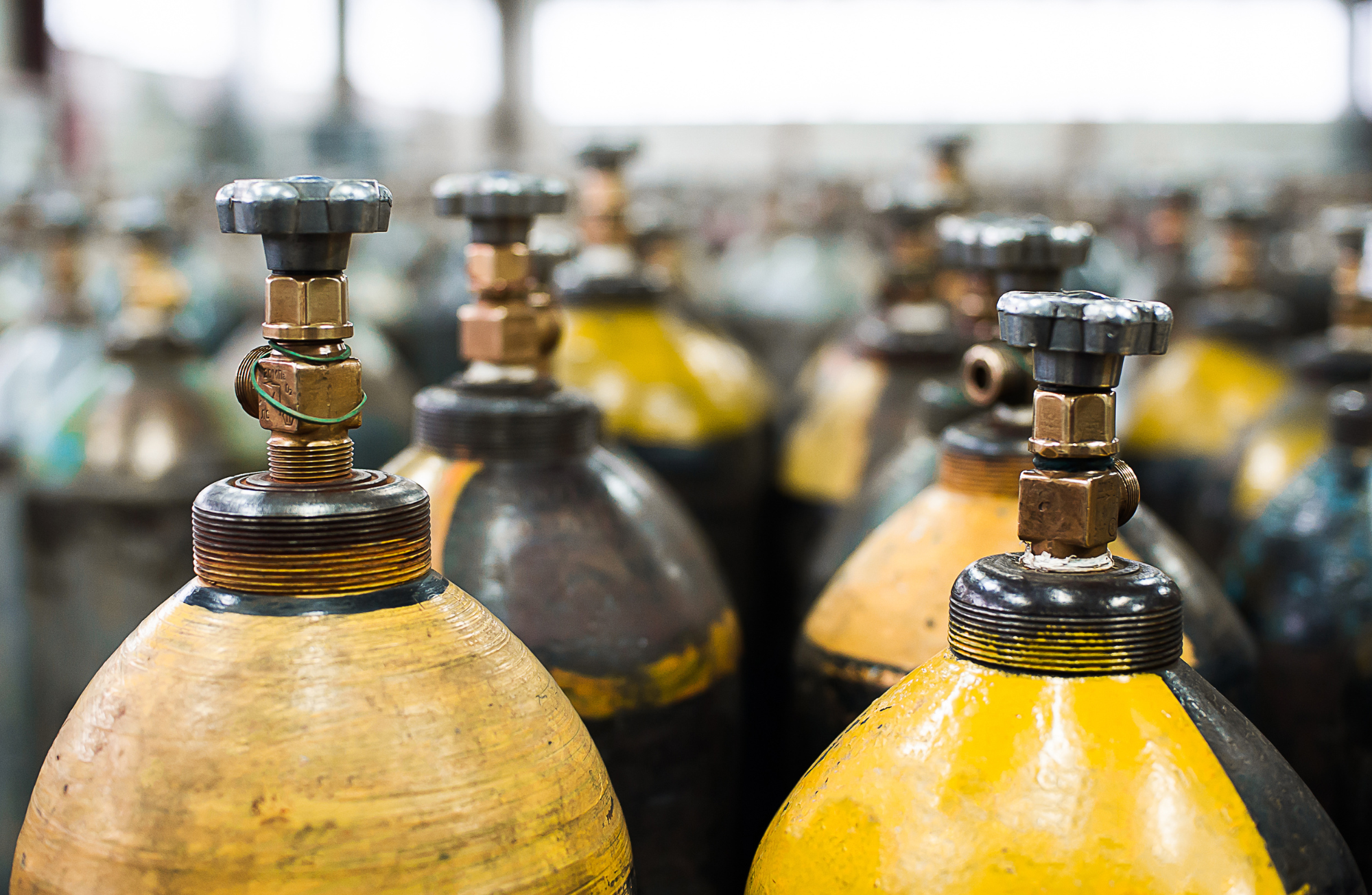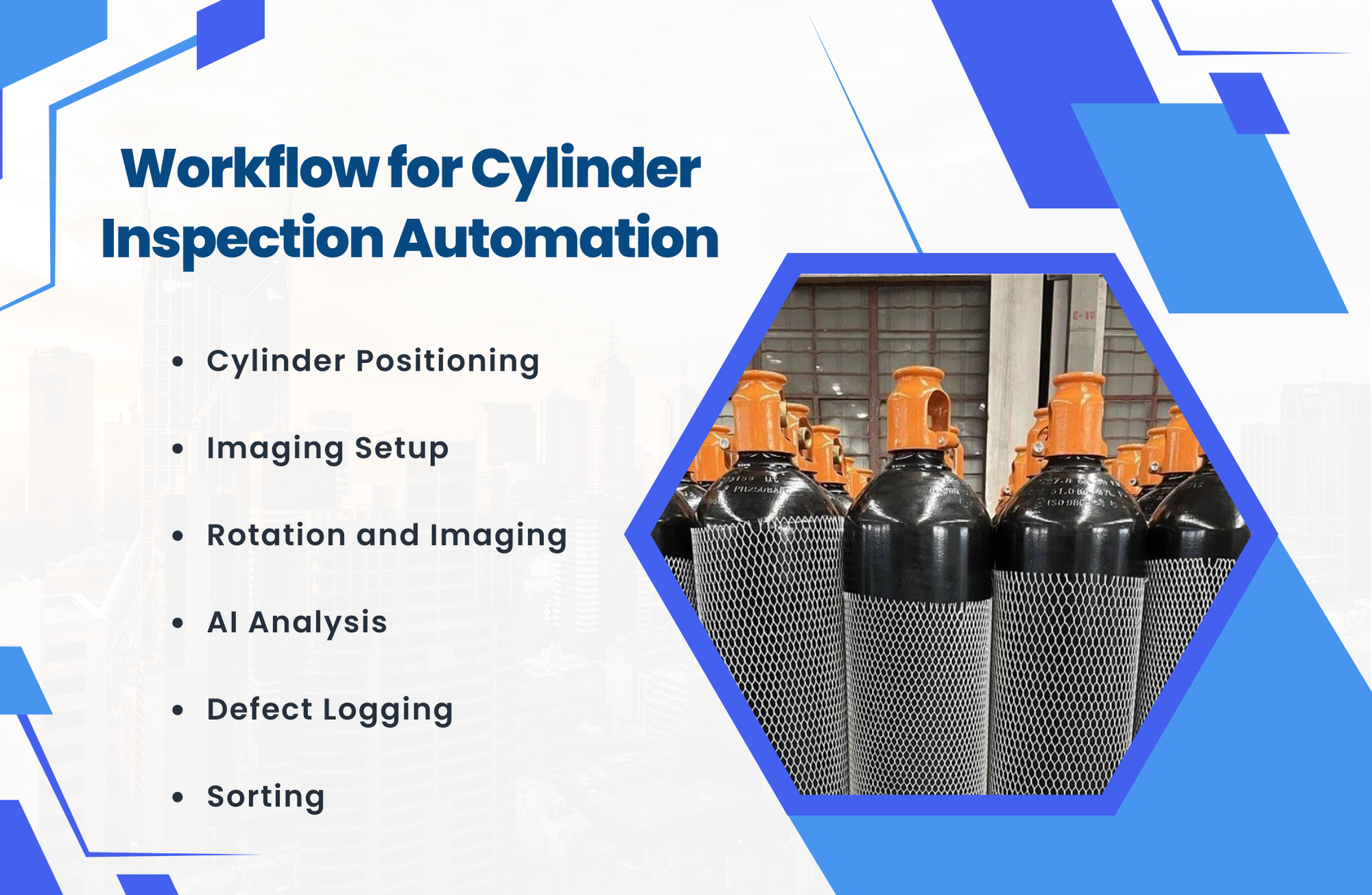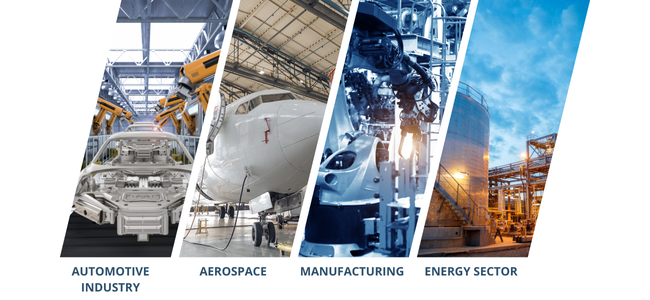Cylinder inspection automation for defect detection using AI powered AOI system
Published on: Dec 24, 2024

Written by: Team Intelgic
Cylinder Inspection Automation for Defect Detection Using AI-Powered AOI Systems
Cylinders are essential components in various industries, including automotive, aerospace, manufacturing, and energy. They come in different shapes, sizes, and materials, ranging from polished shiny metals to textured surfaces. Ensuring the quality of cylinders is critical, as defects can lead to performance issues, safety risks, or product failures. Automating the inspection process with AI-powered Automated Optical Inspection (AOI) systems offers unparalleled precision, efficiency, and scalability.

Challenges in Cylinder Inspection
Inspecting cylinders is a complex task due to their unique characteristics and manufacturing conditions:
1. Diverse Shapes and Sizes
- Cylinders vary in diameter, length, and design, requiring adaptable inspection systems to handle a wide range of dimensions.
2. Rotational Nature
- Cylinders often rotate during production or inspection, making it necessary to synchronize imaging systems with their movement for comprehensive surface coverage.
3. Reflective and Shiny Surfaces
- Polished metal cylinders reflect light, causing glare and making defects harder to detect without proper lighting techniques.
4. Textured Surfaces
- Some cylinders have grooves, patterns, or coatings, adding complexity to defect detection as the inspection system must differentiate between textures and anomalies.
5. High-Speed Production
- Modern manufacturing lines demand real-time inspection systems capable of keeping up with production speeds.
6. Multiple Defect Types
- Defects include scratches, dents, cracks, corrosion, discoloration, coating inconsistencies, and contamination. Each defect type requires specific detection criteria.
Key Components of Cylinder Inspection Automation
1. AI-Powered Defect Detection Software
AI-driven algorithms analyze images of cylinder surfaces to identify defects with high accuracy and reliability.
- Pattern Recognition:
Detects scratches, cracks, or other anomalies by analyzing surface patterns. - Defect Classification:
Categorizes defects by type, size, and severity for actionable insights. - Real-Time Analysis:
Processes images instantly, flagging defective cylinders without delaying production. - Adaptive Learning:
Continuously improves detection accuracy by learning from new defect data.
2. High-Resolution Cameras
The choice of cameras is critical for capturing detailed images of cylinder surfaces.
- Line-Scan Cameras:
Capture images line by line as the cylinder rotates, ensuring full 360-degree coverage. - Area-Scan Cameras:
Used for stationary or slow-moving cylinders to capture the entire surface in a single frame. - Multi-Camera Systems:
Multiple cameras can be positioned around the cylinder to inspect all sides simultaneously.
3. Advanced Lighting Systems
Proper lighting is essential for highlighting defects, especially on shiny or textured surfaces.
- Diffused Lighting:
Provides uniform illumination, minimizing glare and enhancing defect visibility on reflective surfaces. - Directional Lighting:
Accentuates surface irregularities like dents or grooves by casting shadows. - Multi-Angle Illumination:
Illuminates the cylinder from different angles, ensuring comprehensive coverage. - Lighting Angles for Texture Differentiation:
Tailored lighting setups help distinguish between surface texture and actual defects.
4. Synchronization with Rotational Motion
Cylinders often rotate during inspection, requiring synchronization between the imaging system and cylinder movement.
- Encoders:
Track the rotation speed and position, ensuring that the camera captures the entire surface accurately. - Real-Time Image Stitching:
Combines images captured during rotation into a seamless 360-degree view for analysis.
5. Robust System Design
Inspection systems must be durable enough to withstand industrial environments.
- Protective Casings:
Shield cameras and lighting from dust, heat, and vibrations. - Cooling Systems:
Prevent overheating during continuous operation.
Workflow for Cylinder Inspection Automation
- Cylinder Positioning:
The cylinder is placed on a rotating platform or conveyor system. - Imaging Setup:
High-resolution cameras and advanced lighting systems are positioned to capture the surface from all angles. - Rotation and Imaging:
As the cylinder rotates, the cameras capture sequential images of its surface. - AI Analysis:
The images are analyzed in real time by AI algorithms to detect and classify defects. - Defect Logging:
The system records the location, type, and severity of defects for reporting and corrective actions. - Sorting:
Defective cylinders are automatically flagged or removed from the production line.

Common Defects Detected by AOI Systems
- Scratches and Scuffs:
- Superficial marks caused by handling or machining errors.
- Dents and Dimples:
- Depressions on the surface due to impact or stress.
- Cracks:
- Surface or subsurface fractures that compromise structural integrity.
- Coating Inconsistencies:
- Uneven application, streaks, or peeling in coated cylinders.
- Corrosion or Discoloration:
- Oxidation or chemical stains affecting the surface appearance.
- Contamination:
- Dirt, oil, or foreign particles on the surface.
Applications of Cylinder Inspection Automation
- Automotive Industry:
- Inspecting engine cylinders, pistons, and hydraulic components for surface defects.
- Aerospace:
- Ensuring defect-free cylinders in hydraulic systems and structural components.
- Manufacturing:
- Inspecting rollers, shafts, and pipes for industrial machinery.
- Energy Sector:
- Detecting defects in pressure vessels, gas cylinders, and pipelines.

Intelgic’s Expertise in Cylinder Inspection Automation
At Intelgic, we specialize in designing and implementing AI-powered AOI systems for cylinder inspection. Our solutions combine high-resolution imaging, advanced lighting, and cutting-edge AI algorithms to ensure precise and reliable defect detection.
Why Choose Intelgic?
- Tailored Solutions:
Systems customized to your specific cylinder dimensions, materials, and inspection requirements. - Advanced Technology:
Incorporates line-scan and area-scan cameras, diffused lighting, and real-time AI analysis. - Robust Design:
Built to withstand harsh industrial environments and continuous operation. - Scalable Integration:
Easily integrates with existing production lines, handling diverse cylinder types and volumes.
Automating cylinder inspection with AI-powered AOI systems is essential for achieving accurate, efficient, and scalable quality control in modern manufacturing. By leveraging advanced imaging technologies, diffused lighting, and real-time AI analysis, these systems can detect a wide range of defects on reflective and textured cylinder surfaces.
Intelgic’s expertise in automated inspection ensures reliable solutions tailored to your production needs. Contact Intelgic today to learn how our cutting-edge AOI systems can revolutionize your cylinder inspection processes.

